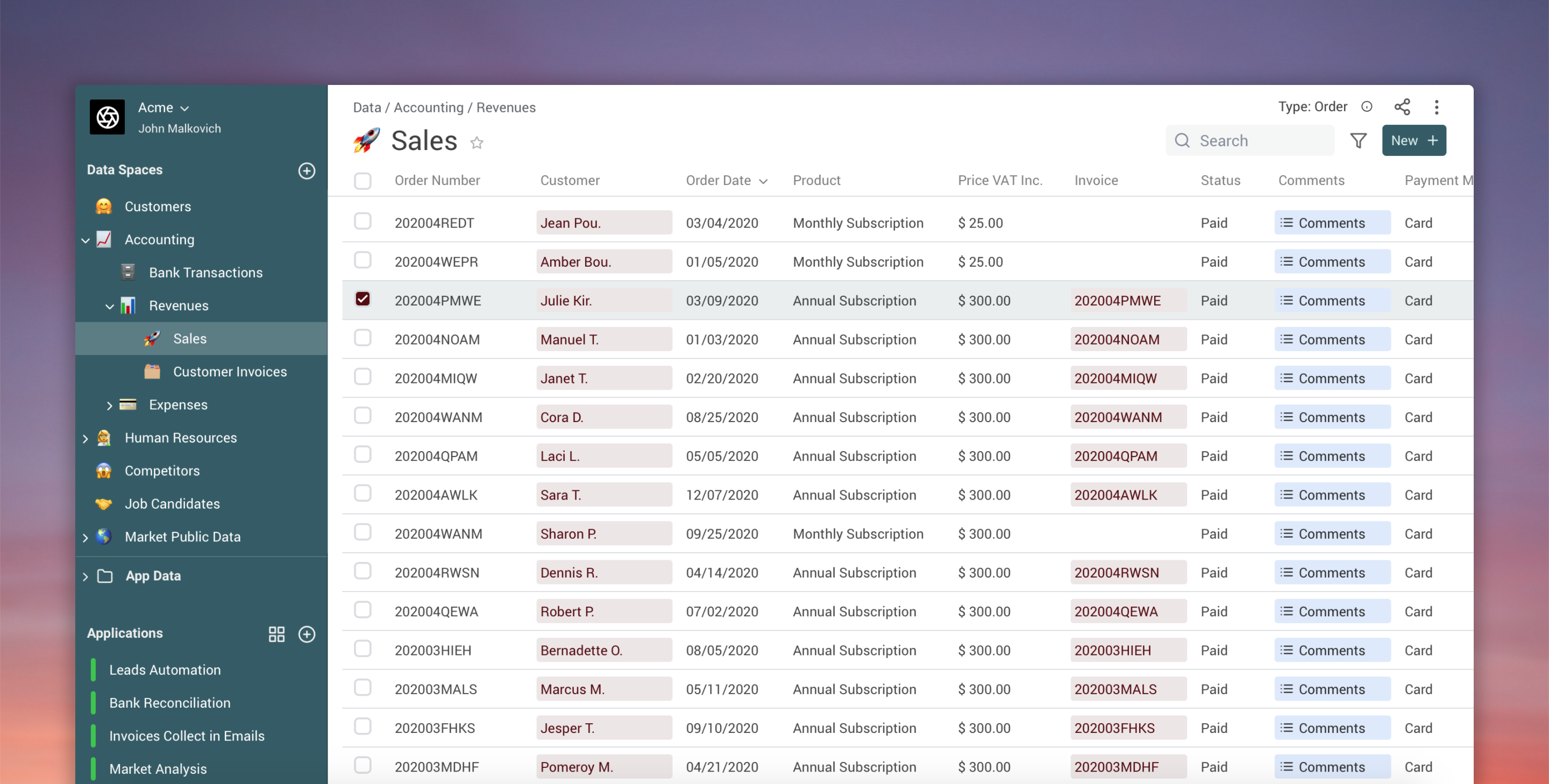Datablist idea comes from a personal frustration in my previous company. I was a Co-Founder and the CTO of an e-commerce software company. One of the goals for the product team was to automate everything redundant. We had built a development pipeline to streamline and automate all the actions between a developer code push and the deployment in production of our software. On every deployment, a Slack bot pushed the release note it has built on its own using the Jira backlog. The DevOps philosophy we followed encourages automation to speed deployment and to remove human error from it. My frustration came from the gap between the level of automation we had in our software development processes compared with all the manual tasks that needed to be done to "run" the company. We used tools for sales, human resources, customer management, etc. Those tools accentuate the existing organization silos by keeping control over the data.
I'm a coder and I tried to aggregate the data by building data bridges and workflows using Google Spreadsheet, Zapier, or other workflow automation software. I found myself to be quickly limited by those tools. I needed to have more control over the data and I had to store it in an external database, with computing instances to read files and images. I finally gave up when I realized I was building a web infrastructure as complex as the one we had for our e-commerce software.
I thought about this problem for a long time. Now that we have digitized everything from supplier invoices to customer contracts, why don't we move toward more automation for the organization processes?
- Supplier invoices scattered in our emails or their websites must be gathered together
- Employees onboarding with welcoming emails, account configurations must be automated
- Reconciliation between invoices and bank transactions must be automatic
- Customers and business data must be stored in a data warehouse fully accessible to the whole company
Same as in a software development team, the organization processes and repetitive tasks must move to a digital operating model. A digital representation of the processes made with software and algorithms.
This vision cannot simply be done with pipes that connect software programs together. Nor with bots that mimic human actions. Complete access to the data and a platform to create tailored algorithms on this data is mandatory.
A digital operating model is infinitely scalable, can be improved at an impressive rate, and is more resilient to human error. The organization data, when aggregated and consolidated, give people information about the situation so they can take initiative and build on this data platform. This is what Agile organizations are about.
It is about moving human activity from performing the processes to designing and monitoring the automation applications that perform the processes.
This is just the beginning. If you share our vision and are interested in influencing the direction of Datablist, subscribe to our newsletter below and follow us on Twitter 🤝.
